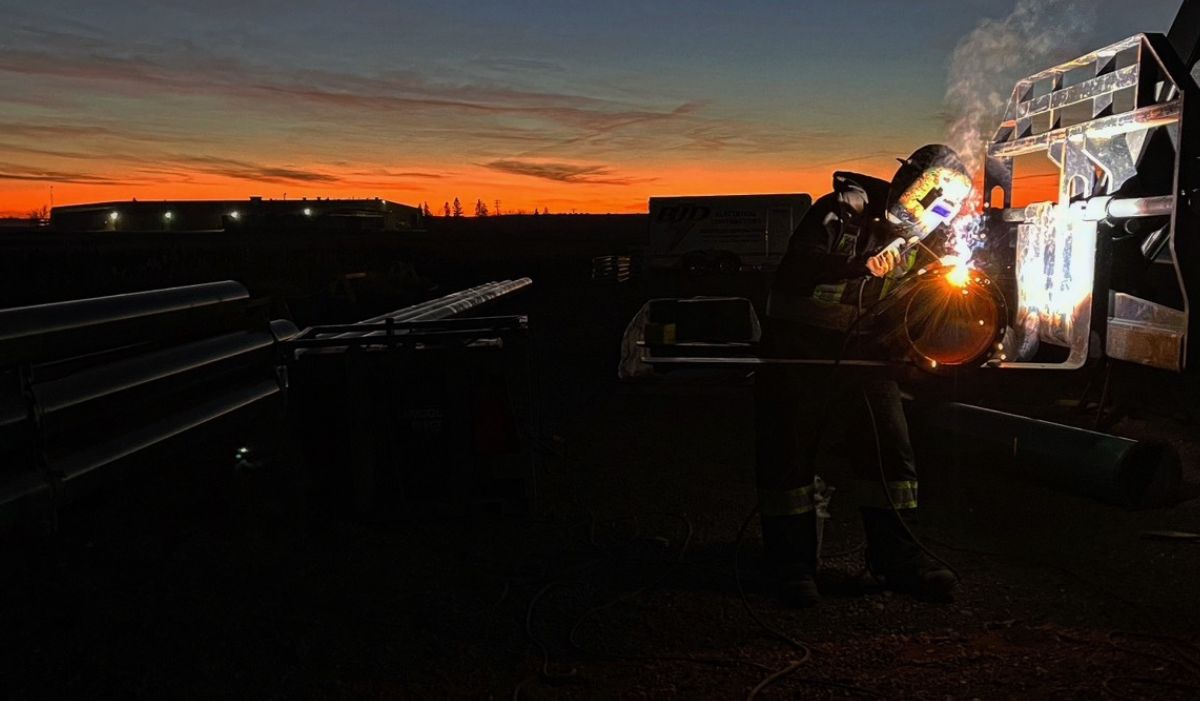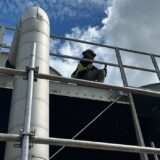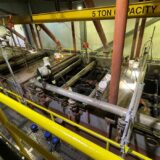Why Modular & Prefabricated Structures Are Transforming Industrial Construction in Saskatchewan
Walk onto almost any industrial site in Canada today, and you’ll notice a shift in how things are built. Cranes still rise and welders still spark, but behind the scenes, more of the work is happening somewhere else — in fabrication shops, not on the field. The construction industry is embracing prefabricated structures in a big way, especially in Saskatchewan, where weather, distance, and logistics often make traditional builds a challenge.
This approach isn’t just about saving time. It’s about building smarter, safer, and with more precision than ever before.
What Makes Prefabricated Structures Different
Instead of constructing everything from the ground up on-site, prefabrication means assembling key components — such as steel frames, wall systems, or platforms — in a controlled environment. Once ready, these parts are shipped to the job site for quick assembly.
For industrial contractors, that control is everything. Working indoors avoids weather delays, reduces waste, and helps maintain consistent quality across every piece of the structure. When those parts reach the site, they’re ready to install — no guesswork, no last-minute cutting or welding in minus-30 temperatures.
Why Prefabricated Structures Are Becoming the Smarter Choice
1. Time Savings That Keep Projects on Schedule
Prefabrication allows site preparation and fabrication to happen at the same time. While one crew pours foundations, another builds steel assemblies in the shop. The result is a shorter overall timeline — often by weeks or even months.
For mining, manufacturing, or agricultural operations where every day counts, this speed can make a major difference. The faster a facility is completed, the sooner production starts.
2. Higher Quality, Lower Risk
Every project depends on accuracy. By fabricating indoors with precise tools, measurements, and quality checks, the margin for error drops dramatically.
Teams like those at Credence Construction Ltd work with advanced steel fabrication systems to ensure each beam and plate fits perfectly. This minimizes on-site modifications and keeps crews safer — fewer cuts, climbs, and risky adjustments in the field.
3. Predictable Costs in an Unpredictable Industry
Traditional builds often face budget surprises: weather delays, labor shortages, or rising material costs. Prefabrication helps stabilize these factors. Because most of the work happens in a controlled setting, timelines and material usage are easier to forecast.
This makes prefabricated structures appealing for industrial projects where financial predictability is essential. Owners get fewer surprises, contractors keep schedules tight, and everyone benefits from smoother coordination.
4. Building Sustainably Without Sacrificing Strength
Prefabrication aligns naturally with sustainability goals. Materials are cut and reused more efficiently, waste is minimal, and noise or debris at the site is reduced.
In industries facing stricter environmental expectations, that’s not just good practice — it’s a selling point. Using prefabricated systems built from durable, recyclable steel also means the structure can be modified or expanded later, extending its life cycle.
The Saskatchewan Advantage: Prefabrication for Industrial Growth
Saskatchewan’s industrial landscape depends on efficiency. Mining, agriculture, and manufacturing facilities all need large, durable structures that perform reliably year-round.
Prefabricated structures make this possible. From equipment enclosures to plant extensions and heavy-duty work platforms, modular construction allows these facilities to be installed quickly, even in remote regions. For growing operations, expansion becomes easier — new sections can be fabricated and added without halting production.
Steel: The Backbone of Prefabricated Construction
Every prefabricated project begins with solid materials, and in most cases, that means steel. Its strength, flexibility, and longevity make it the foundation of industrial construction.
At Credence Construction Ltd, the steel fabrication process is tightly linked to prefabrication. By fabricating and pre-assembling steel components in advance, projects move from planning to installation seamlessly. Each beam, column, and bracket arrives ready to bolt or weld into place, saving valuable time and ensuring consistency from start to finish.
Drafting, Design, and Skilled Trades Behind the Build
Behind every efficient prefabrication project is a combination of sharp design and skilled labour. Drafting and design teams translate project plans into detailed shop drawings that guide fabrication precisely. Millwrights and welders then take those designs from concept to completion, ensuring every component aligns with the rest of the structure.
This collaboration is what sets experienced industrial contractors apart. At Credence Construction Ltd, teams coordinate design, fabrication, and installation to deliver solutions that meet demanding performance and safety standards.
Prefabrication in Practice: Real-World Impact
Imagine building a conveyor system for a processing plant in Northern Saskatchewan. Transporting materials, setting up scaffolding, and assembling everything on-site could take weeks. But with prefabricated structures, key components — frames, platforms, safety rails — can be built and partially assembled beforehand. Once delivered, they go up in a fraction of the time.
This approach saves more than labour hours. It cuts downtime, reduces travel costs, and lowers the risk of weather-related delays — all while maintaining consistent quality.
The Future of Industrial Construction Is Already Here
The growing demand for prefabricated structures isn’t a passing trend. It reflects a fundamental shift toward smarter, safer, and more cost-effective construction practices. With tools like 3D modeling, digital drafting, and automated fabrication, industrial builds are becoming more precise and more efficient.
Companies that adapt early — combining advanced fabrication with proven field expertise — are setting new standards for the industry. Credence Construction Ltd continues to be part of that movement, helping clients across Saskatchewan meet their construction goals through innovation and craftsmanship.
Final Thoughts
Prefabrication is changing how industrial construction happens in Canada. It’s faster, safer, and more predictable — and for businesses operating in demanding environments, those advantages can’t be ignored.
As industries across Saskatchewan look to modernize, prefabricated structures are leading the way. They offer the balance of strength, efficiency, and flexibility that every succes



